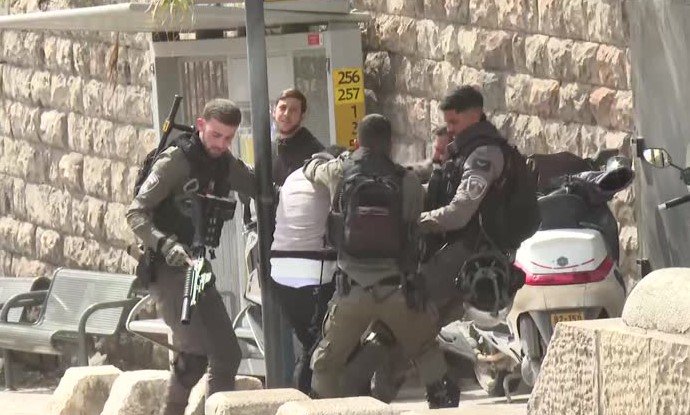Prosecutors link suspect to one attack, but new testimony suggests more—raising tough questions over limits of evidence
It started as a single case. A man in Tel Aviv, arrested in connection with a violent street assault, was quickly indicted. But now, more women are stepping forward with eerily similar stories—and the city is beginning to wonder if a serial attacker has been hiding in plain sight.
Despite the new testimonies and near-identical assault patterns, authorities say they can only move forward with charges in one case. The reason, they insist, is painfully simple: not enough evidence.
Same street, same method, same violence
A second victim, whose identity remains under court-ordered protection, described an attack that mirrors the first almost beat for beat.
She had just turned off Dizengoff Street when she felt a blow to the back of her head. The next thing she remembers is waking up in the hospital. The time, location, and method—striking from behind, with no verbal exchange—match the details from the first indictment.
And she’s not alone. A third woman, interviewed anonymously by Channel 12 News, described an attack that occurred just two blocks away, using the same approach.
She, too, was knocked unconscious and robbed.

The legal catch: no clear suspect ID
So why hasn’t the suspect—31-year-old Oren Fadlon—been charged with more than one assault?
Prosecutors say they’re stuck. In each of the new testimonies, the victims either lost consciousness or were attacked from behind, meaning they couldn’t describe the attacker’s face. Without a positive ID or surveillance footage, linking Fadlon to the other incidents remains legally fragile.
One Tel Aviv police official, speaking off record, said the evidence is “suggestive but circumstantial.” That’s the line they keep returning to.
And that, according to legal experts, is a tough wall to climb.
Victims frustrated by silence, lack of answers
Some victims and their families feel like the system is failing them.
“He hit her so hard she was bleeding from the ears,” said the mother of one victim, her voice trembling during a radio interview. “And they say it might not be the same man? Come on.”
Even though several attacks took place within a short radius and shared the same characteristics—late at night, sudden blows, no witnesses—police say each case must stand on its own merits.
This has left families feeling isolated and anxious.
“She walks with a taser now,” said the sister of another victim. “She used to love this city. Now she can’t step outside after dark.”
What the law demands, and what it doesn’t
Israel’s criminal procedure, like many Western legal systems, demands concrete proof for each charge. And even when a suspect is in custody, additional charges require fresh, admissible evidence.
Here’s the legal breakdown, according to Tel Aviv criminal defense attorney Gilad Michaeli:
-
Eyewitness ID is often key, but not essential if other proof—like fingerprints or DNA—is strong.
-
Circumstantial patterns, such as similar M.O., may bolster a case, but won’t stand alone.
-
Past conduct can be introduced in trial only if directly relevant and pre-approved by a judge.
In Fadlon’s case, the absence of surveillance footage or forensic evidence at the newer crime scenes makes linking him to them legally difficult.
“Courts don’t deal in vibes,” Michaeli said. “They deal in proof.”
Mounting pressure on prosecutors
Still, there’s growing pressure on the prosecution to take a broader view.
Women’s rights groups have staged two small protests outside the Tel Aviv District Attorney’s Office, demanding greater transparency and faster progress. One of the placards read: “Three Women. Same Street. One Attacker.”
Social media, too, has exploded with posts questioning the narrow focus of the indictment. Some users have gone as far as to crowdsource tips and possible sightings of the attacker.
That online momentum has prompted the Justice Ministry to issue a rare public clarification, saying that “investigations remain active and open in multiple incidents related to the original suspect.”
Even so, activists say more needs to be done.
“We’re not asking for shortcuts,” said Yael Hamdani, a spokesperson for a Tel Aviv-based victims advocacy group. “We’re asking for urgency.”
One charge, many unknowns
Fadlon’s trial is expected to begin next month. His attorney maintains his innocence and has already filed a motion to suppress evidence obtained during his arrest, citing alleged procedural flaws.
Meanwhile, detectives continue reexamining older cases that may now fit the pattern. But with each passing week, public frustration grows louder.
Here’s a snapshot of the current situation:
| Category | Status |
|---|---|
| Suspect in custody | Yes |
| Number of confirmed charges | 1 |
| Additional incidents under review | 3+ |
| Video surveillance evidence | Only in one case |
| Victim identifications | Only in one case |
For now, the case remains officially limited. But as more women come forward and more details emerge, the question hanging over Tel Aviv is no longer if Fadlon is a serial assailant—it’s how many more cases might be out there, waiting to be heard.
